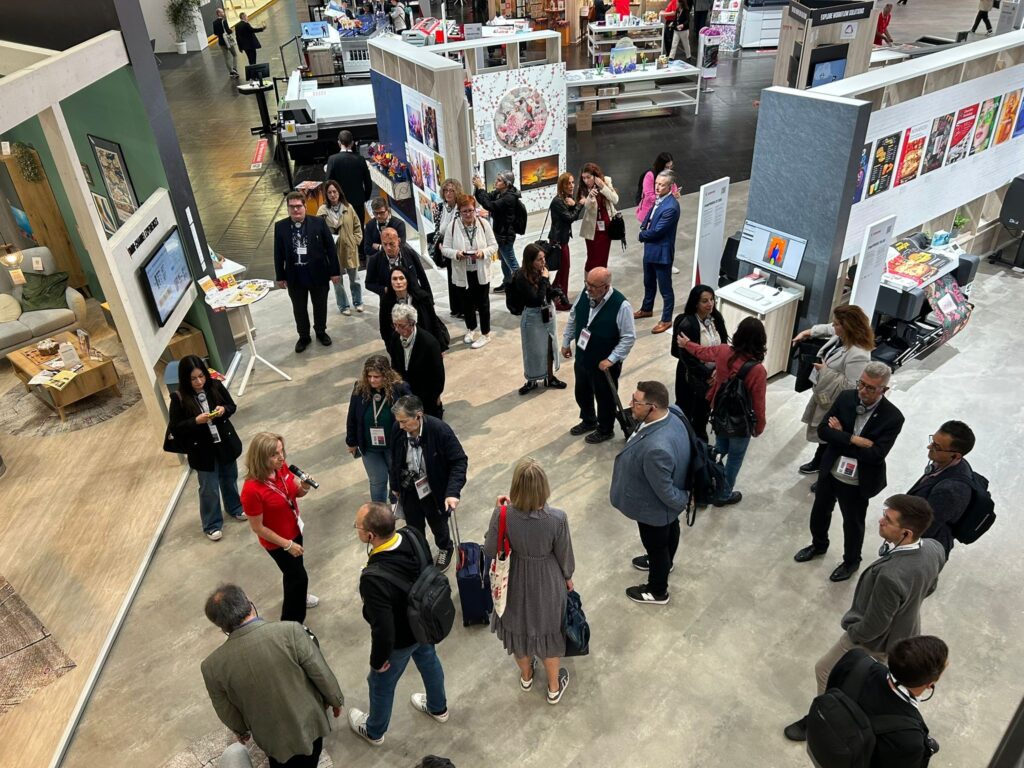How do you make your brand, your products, and your message really stand out at a crowded trade show? Success really starts with proactive and strategic engagement with key specialist media, because for all the change in both the media landscape, and the global exhibition calendar in recent years, specialist media remains one of the biggest drivers of foot traffic to exhibition booths.
At AD Communications, helping global brands secure positive media coverage at major exhibitions is something we’ve been doing successfully for more than four decades. Want to know what works? And what doesn’t? Read on!
Why this still matters
There’s still nothing quite like the show floor. You can get a real feel what’s new, and what really matters; you can see technology in action, and you can have those conversations that just don’t happen by email. Exhibitions remain a crucial source of leads and brand awareness for B2B brands, and, just as important, is knowing how to engage the media to make the most of those opportunities.
When we opened our doors in 1984, there was no social media, and no online news, but 40 years on – though the number of news channels has exploded – specialist journalists still set the tone for what’s worth people’s attention to and exhibitions still put decision-makers and technology in the same room. The pandemic pushed shows online for a while, but reports of “the end of the exhibition” were premature. In-person events are back because seeing and questioning in person is more powerful than watching a screen.
Before the event: where coverage really begins
Most editors don’t want to be flooded with information on the morning the doors open. Give them time. Share substantive news a week or two ahead under embargo so they can read, analyse and arrive with prepared questions. Social posts or pre-show emails are fine as pointers but they don’t replace a proper briefing with usable “take-home” assets.
Book one-to-ones ahead. Offer 20–30 minute private interviews with the people who know the product best- people who can explain what’s new and why it matters. Include exact times and locations, and offer language options where possible.
During the event: stay visible and approachable
Offer a press conference only if there’s something genuinely new to say, or when it adds depth that a press release couldn’t cover. Keep it short (about twenty minutes, thirty at most) and avoid hosting it on the stand where noise and crowds reduce attention. Q&A sessions, in a room of journalists competing to find a unique angle, can kill originality. Editors would rather ask their best questions one-to-one and leave with a story no one else has.
Get assets and content into their hands quickly and make a customer voice available where you can, it adds perspective fast. Build a simple press kit with releases, a one-page factsheet, hi-res images/logos, and spokesperson contacts. Editors like the shift from paper packs to digital. Some want everything by email with a download link, others are happy to scan a code and grab what they need. A few still like a USB but remember many newer laptops don’t have the port. The point is offering multiple options and letting them choose. And don’t forget to always offer images from/at the event. Editors will often use their own photographs but timely, high-resolution shots still matter.
After the event: follow up with purpose
Time still matters when the show ends. If journalists haven’t seen or heard your story before or during the event, it’s usually too late to catch their attention once they’re back at their desks.
Reach out within a day or two to share anything you promised, a short thank-you note, assets or quotes and a clear next step are enough. Save fresh data, updates or new angles for a later opportunity.
Focus your post-show efforts on coverage that is already in motion, don’t try to restart the conversation from scratch.
Our view
Exhibitions reward the teams who respect time and context. Plan early, communicate clearly, move fast with assets and make it easy for journalists to get what they need. After decades of managing exhibition media programmes, we know that genuine engagement leads to meaningful coverage. That’s how stories get written and why they get remembered.
If you’d like to read the full findings from our conversations with editors across Europe and see what really drives coverage, you can find the complete guide here
